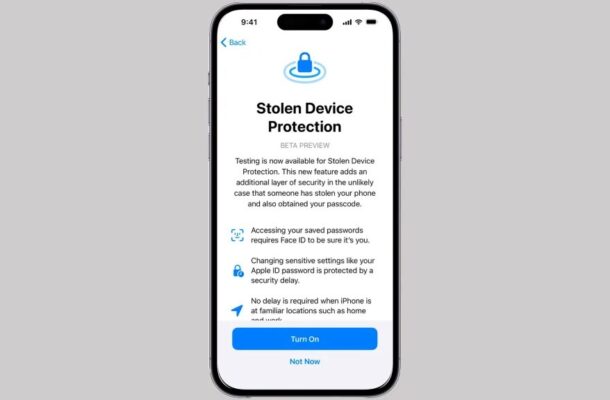Apple introduces Stolen Device Protection in iOS 17.3, a groundbreaking feature set to redefine iPhone security. Discover how this innovation leverages location, biometric scans, and time delays to thwart thieves and safeguard user data.
Introduction:
In a bold move towards enhancing user security, Apple has introduced a groundbreaking feature for iPhone users – Stolen Device Protection. This cutting-edge addition, currently undergoing testing in the beta version of iOS 17.3, aims to revolutionize the way iPhones are protected in the event of theft. By combining location tracking, biometric scans, and strategic time delays, Apple seeks to empower users to thwart unauthorized access and safeguard their valuable data.
Stolen Device Protection: A Shield Against Thieves
Innovative Functionality:
The Stolen Device Protection feature is poised to be a game-changer in combating a common tactic employed by iPhone thieves in public spaces. Traditionally, thieves observe users entering passwords before swiftly stealing the device. In such scenarios, thieves manipulate the Apple ID password, disable Find My, add a recovery key, and wipe the phone clean for resale – all before the victim can react.
Testing in Beta:
Currently in the testing phase within the beta version of iOS 17.3, developers are getting an exclusive look at the potential of this security upgrade. Apple, renowned for its commitment to user privacy, is harnessing the power of cutting-edge technology to stay one step ahead of cyber threats and theft tactics.
How Stolen Device Protection Works:
Triad of Defense:
Stolen Device Protection relies on a sophisticated blend of location tracking, biometric scans (Face ID or Touch ID), and strategically implemented time delays. This triad of defense empowers users to take swift action in blocking unauthorized access, even in the aftermath of a theft.
Limiting Thieves' Capabilities:
Thieves accustomed to changing Apple ID passwords and wiping phones clean for resale will face a formidable challenge. With the new functionality enabled, the stolen iPhone will prompt for a Face ID or Touch ID scan, particularly when detected in non-usual locations such as work or home. This adds an additional layer of security, making it significantly harder for thieves to compromise the device.
The User's Role: Enabling Stolen Device Protection
User Empowerment:
To ensure widespread adoption, Apple plans to encourage users to enable Stolen Device Protection within iOS 17.3. By activating this feature, iPhone users actively participate in fortifying their device against potential theft and unauthorized access. Apple's proactive approach aligns with its commitment to user-centric security measures.
In conclusion, Apple's Stolen Device Protection is not just a feature; it's a paradigm shift in iPhone security. As the tech giant continues its quest for innovation, this addition underscores its dedication to user privacy and the relentless pursuit of staying ahead in the ever-evolving landscape of digital security. Stay tuned as iOS 17.3 heralds a new era in safeguarding your iPhone from potential threats.


Comments